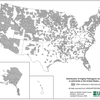County is on the brink of becoming a yellow zone
ALBANY COUNTY — Albany County is “right on the doorstep” of being declared a yellow zone, according to Daniel Lynch, the county’s deputy executive.
“We’re currently on a steady march in the wrong direction toward that 3-percent threshold for a seven-day rolling average of infection,” said Lynch at Saturday morning’s press briefing.
The county’s executive, Daniel McCoy, started the briefing by announcing 112 new cases of COVID-19 since Friday.
The county’s current seven-day rolling average is 2.9 percent.
McCoy noted the rate for Albany county has gone over 3-percent “We’ve just been lucky we get that dip and it brings our rolling average down,” said Mccoy.
“We are hoping to stay out of the yellow zone but we need to be careful,” said McCoy. He acknowledged, “The sacrifices we are asking people to make are annoying and frustrating.” And he thanked residents who have been “doing the right thing.”
The state’s system of establishing micro-cluster zones, which started on Oct. 6, identifies severe outbreaks in red zones and has strict requirements like closing schools and non-essential businesses and limiting gatherings to 10 people.
Orange warning zones have fewer restrictions and yellow precautionary zones have still fewer restrictions. Schools can stay open in yellow zones but 20 percent of students and staff must be tested each week for COVID-19. Houses of worship are limited to 50 percent capacity, mass gatherings are limited, and no more than four people can dine at a restaurant table whether inside or out.
Lynch explained that Albany County, which the state has classified as Tier 2, has the 3-percent threshold while the city of Albany, which the state considers Tier 1, has a lower threshold — of 2.5 percent.
Once Albany County meets the 3-percent threshold (or the city of Albany meets the 2.5 percent threshold) it’s considered a qualifying day, said Lynch.
“You need 10 of those qualifying days to get into the first, precautionary zone, that being the yellow zone ...,” he said. “If, in that 10-day window, you have a day in which you fall under the threshold … it would reset the clock of those 10 days.”
Lynch noted that infection rates, based on the percentage of tested people who get positive results, are relative.
He also explained that the state’s health department mines data to define the micro-cluster zones, which could be as small as, say, the University at Albany, or could be the county as a whole.
Lynch concluded his comments with a thought shared by his 9-year-old daughter who attends school in the county. “Dad,” she told him, “people are done with COVID-19 but COVID-19 is bot done with people.”
“Our school-age kids are doing their part every single day and wearing their masks and following the social guidelines …,” said Lynch. “And it’s really not a big ask to ask responsible adults to do the same thing.”
Lynch urged of being declared a zone, “Let’s not get there. Do your part. Help us as a county and community to stay out of a cluster zone and keep things open.”
Albany County Health Commissioner Elizabeth Whalen stressed a similar message and also focused on the sacrifice people should make by not gathering with those outside their immediate families for Thanksgiving.
Whalen said that she herself would love to get together with her parents and her siblings and their children as her family usually does at Thanksgiving.
Whalen asked, “How would you feel in two weeks’ time, knowing that someone in your family may have unwittingly infected an elederly relative?” That person could become hospitalized. “Unfortunately,” said Whalen, “people are dying.”
She also said that her department is working with schools that are preparing for the challenge of testing a fifth of their population if a yellow zone is declared.
“I think this is going to get worse before it gets better,” Whalen concluded.
Newest numbers
As of Saturday morning, Albany County has 4,954 confirmed cases of COVID-19, McCoy said.
Of the 112 new cases, 23 had close contact with someone infected with the disease, two reported out-of-state travel, 82 did not have a clear source of infection identified at this time, and five are health-care workers or residents of congregate settings.
“A whopping 82 people didn’t have a clear source of infection,” said McCoy, reiterating that the information patients share with health-department investigators is “totally and completely private.”
“It only helps to stop the clusters; it only helps to stop the spread,” he said of sharing information on where and with whom an infected person has been. McCoy again urged, “Help us help you.”
Albany County currently has 2,061 residents under quarantine, up from 1,962. The five-day average for new daily positives rose to 89.8 from 81. There are now 830 active cases in the county, up from 791 on Friday.
So far, 20,462 county residents have completed quarantine. Of those, 4,124 had tested positive and recovered.
Two new hospitalizations occurred overnight, while the number of county residents currently hospitalized remains at 45 — a number McCoy termed “alarming.” Twelve COVID-19 patients are in intensive-care units, and the county’s hospitalization rate is now 0.90 percent.
Albany County’s COVID-19 death toll remains at 148.


